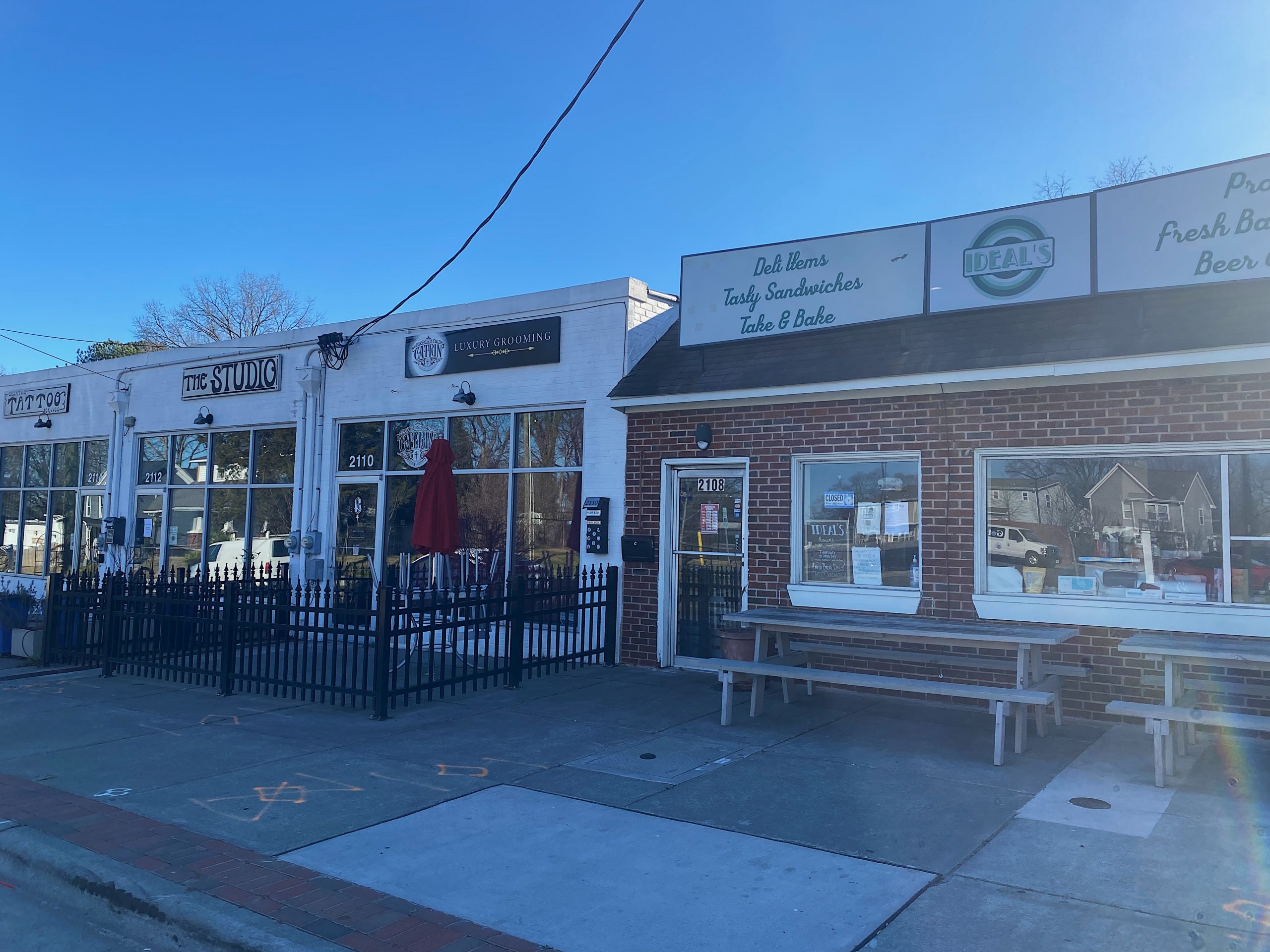
Businesses along the street of Angier Ave. in East Durham. Photo by Sydney Sasser
Thursday, Feb. 22, 2024
By Sydney Sasser
**This story is part of series on the economic development of East Durham**
Once economically struggling, East Durham has found itself at the center of a financial boom.
In the late 1800s, East Durham was a stable community primarily supported by blue-collar work in textile mills. A combination of different socioeconomic classes would prove essential in sustaining the vibrant community.
The closing of vital textile mills, coupled with the construction of the Durham Freeway and urban development left many people out of work and displaced in the 1960s. The economic instability that resulted contributed to the rise of crime and poverty in the area. Many other factors contributed to the decline of the neighborhood, such as lack of investment in infrastructure, neglected education, and poorly maintained homes and streets.
There were previous efforts to revitalize the community, but a lack of community involvement and coordination hindered development. In the early ‘90s, there were new efforts to revitalize the community. For instance, Steve Chalmers, co-founder of the Hayti Reborn Movement and former Chief of Durham Police Department, helped start the Partners Against Crime Initiative with the goal of empowering the community and giving it a voice. The movement gained support from both the city, county and high-power elected officials. Other related initiatives, such as Coffee with the Council, which allows residents to meet with the City Council before a budget is passed or business districts, wherein businesses discuss pressing issues in a collaborative setting have led to a partnership between the community and government. These movements between the community and government have sustained for over 30 years.
“Once you empower a community, it is very difficult to take the power back, especially when they’re organized and they’re making a difference in things,” said Chalmers.

The Office of Economic and Workforce Development got involved with community members to strategize infrastructure developments aimed at fostering local development. Self-Help Credit Union also began investing in several buildings. James Rogers, an attorney, and a black real estate investor also began investing in buildings.
Community involvement has proven vital in bringing businesses to East Durham. Aidil Ortiz, the founder of Aidilisms, has been at the forefront of collaborating with local government and the community to address the type of businesses that come in the community. Self-Help also created a Neighborhood Advisory Council to provide feedback on the potential businesses interested in the area. The goal is to attract businesses who can stay in the area long-term by meeting the needs and wants of the community.
Ultimately, the community has made it clear that it desires a space for both nonprofits and retail spaces.
“We want more than just people to use us as a target audience for their charitable causes, we have other things we like to do,” said Ortiz. “We have to buy gifts for our friends, go out on dates or want to take our families out for ice cream.”
The community is seeking businesses that can provide an affordable but healthy lifestyle, as well as those that make black and brown people feel safe and welcome.
“I am in love with the fact that we are welcomed there, we belong there, and that other people get to enjoy it too, but it’s not at our expense,” said Ortiz.
As the community continues to develop, more infrastructure needs will have to be addressed, such as safe walking and biking.
It is crucial for the economic development of the area to become sustainable in conjunction with the desires of the community.
“It really doesn’t matter if you got the right people on the bus if they don’t have a say on where the bus is going,” said Chalmers. “All they’ll be able to say is that they took me for a ride and now I’m back, but I’m in no better shape than I was when I got on the bus.”
Edited by Ava Dobson